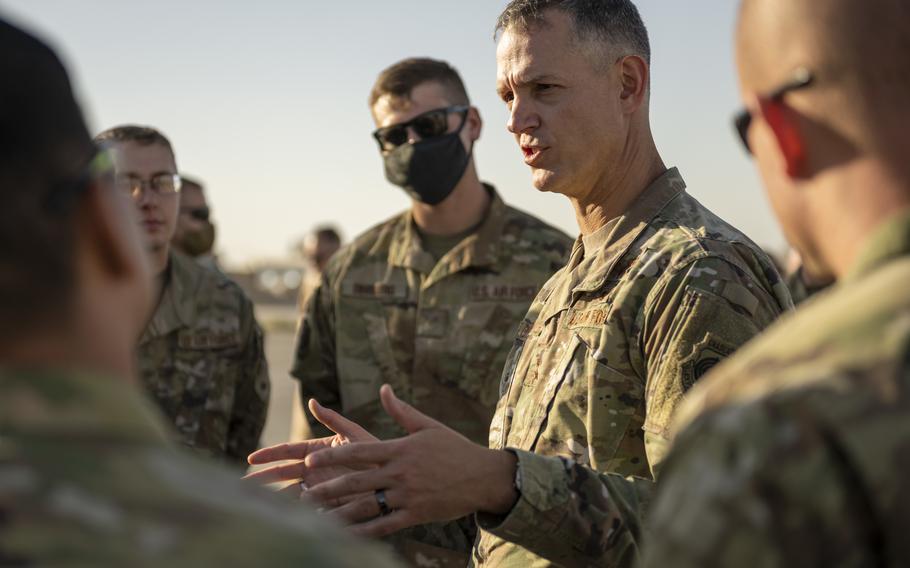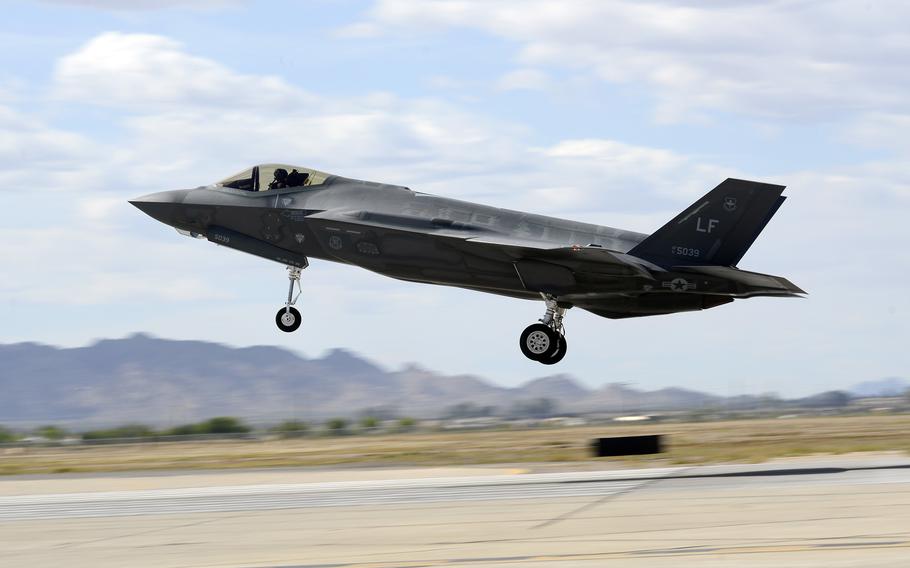
Air Force Lt. Gen. Alexus Grynkewich talks with airmen in September 2021 at an undisclosed location somewhere in Southwest Asia. (Traci Keller/U.S. Air Force)
WASHINGTON – Moving more U.S. ships and aircraft into the Middle East region has deterred Iranian attacks on commercial ships in the Persian Gulf, the commander of the U.S. Air Forces Central Command said Wednesday.
The U.S. in July ramped up forces in the region after Iran harassed ships in the Strait of Hormuz, a key waterway. The Pentagon deployed a portion of the Bataan Amphibious Readiness Group with a Marine expeditionary unit.
This followed another Pentagon announcement that the USS Thomas Hudner, a new Arleigh Burke-class destroyer, and fighter jets, including F-35s and F-16s, were deploying to the region near the Strait of Hormuz and Gulf of Oman to defend the U.S. interests.
The Air Force at the time had A-10 Thunderbolts, also known as “Warthogs,” patrolling in the region when Iranian naval forces attempted to seize oil tankers near the waterway, even opening fire on one of the vessels.
In the past two years, Iran has attacked, seized, or attempted seizure of nearly 20 internationally flagged merchant vessels in the Strait of Hormuz, a key global shipping channel, according to U.S. Central Command, which oversees operations in the Middle East region.

A F-35 Lightning II prepares to land in 2016 at Luke Air Force Base, Ariz. (Devante Williams/U.S. Air Force)
“Our increased air presence, but more importantly the increased presence of surface vessels … combined with our air power has deterred Iran from taking any actions against maritime shipping,” Air Force Lt. Gen. Alexus Grynkewich said at a Defense Writers Group discussion with reporters. “My hope is that they’ve seen that message and that they remain deterred over the longer term.”
A recent rash of incidents also has occurred in Syria involving Russia.
A Russian aircraft flew over an American military base in Syria in what Pentagon officials described as an intelligence-gathering mission and damaging a U.S. Reaper MQ-9 aerial drone by releasing several flares. Fighter jets and surveillance drones from Russia also have buzzed U.S. bases in Syria and violated protocols that were developed to prevent fighting between American and Russian forces, Grynkewich said in June.
With Russian and U.S. forces operating in Syria, communication protocols have been established to avoid a direct conflict.
Grynkewich on Wednesday said Russian activity in the region has remained constant, continuing to fly into airspace over Al-Tanf garrison in Syria and intercept MQ-9s.
Al-Tanf is an American military base located in a part of the country controlled by forces opposed to the regime of Syrian President Bashar al-Assad, which is backed by Russia, and aligned with the United States. The base houses American troops and partner forces. Roughly 900 U.S. service members are based in Syria.
Grynkewich said he has seen “some favorable shifts in behavior” from Russian aircraft in the last month. This includes not flying directly over American troops and not firing flares at MQ-9s.
“They will still intercept our MQ-9s, but their behavior is safe,” he said. “I would still characterize it as unprofessional … but it is safe behavior now and, again, I welcome that change.”
Iran-backed militia groups in Iraq have more weapons than they did three or four months ago, Grynkewich said, but have ceased attacks for now on U.S. forces.
“It is a concern of mine that the militias over the years have continued to get stronger and that gives them more sway in Iraq. And, frankly, I see that in the long-term a real threat to Iraqi sovereignty,” he said.